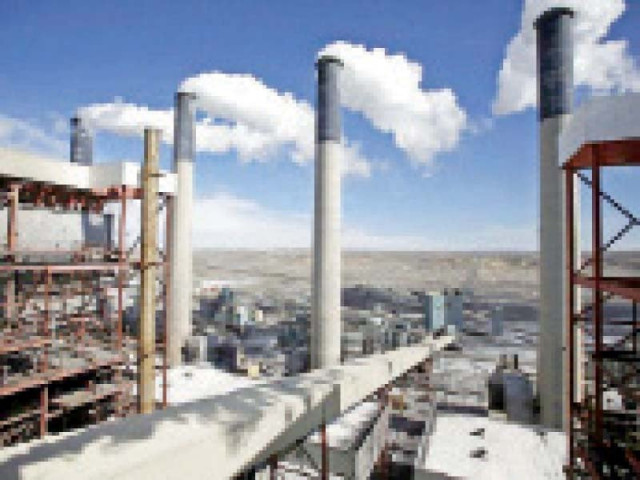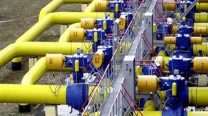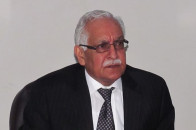Transparency in oil and gas sector
Data dissemination to public prevents irregularities, misunderstanding

Transparency may have many definitions. Its basic meaning is visibility. In applied sense related to governance, it means visibility of operations and decision-making in qualitative and quantitative terms.
Transparency means availability of data and information to all stakeholders. Transparency requirements of the government, public sector and regulators are usually much more and stringent as opposed to the private sector.
Private sector is also required to publish data of financial conditions, sales and inventories in case of large and listed companies. Right to Information (RtI) has become a law in many countries around the world including Pakistan.
In Pakistan, regulatory agencies have played a major and positive role in promoting and expanding transparency in their respective domain.
Our focus here is on transparency issues in the oil and gas sector. Let us start with some praise and appreciation where adequate transparency and dissemination is provided by the Oil and Gas Regulatory Authority (Ogra).
In the case of distribution companies’ tariff and LNG tariff, highly accurate and detailed data is published through a meticulous process.
Ogra also publishes an annual report, which disseminates useful information. Here, we will draw the attention of stakeholders to some lacunae in the transparency aspects. There are the following areas which need attention:
Price build-up of petroleum products, well-head prices, and oil vs gas wellhead pricing.
Gasoline and HSD cost
In earlier times, Ogra used to publish all components of the price structure of most petroleum products in a readily available form. Only, final prices of some cost elements such as OMC and dealer margins, IFEM (transportation), etc are published. Nowhere can one get a table which transparently describes the cost/ price structure.
It is done with quite an elaboration only in the case of E-10 petrol, which is no longer sold. Some intelligent and dedicated researchers may be able to extract data about gasoline, which is not actually intended by Ogra.
Similar is the case of high-speed diesel (HSD). All kind of plausible and implausible explanations and reasons can be given like duplication or overlap of authority with the Petroleum Division on the subject; or a semblance of open market wherein dealer and petrol pump-wise prices are published, in my view, without any meaningful rationale.
Gasoline, HSD and other products like kerosene and jet petroleum (whether imported or locally produced) are priced as per the landed price based on the international benchmark prices.
This can, however, be deceptively credible. There are unknowns of extra margins that are charged by the importers/ suppliers, demurrages, high port and handling charges and other inefficiencies. Such data is not disclosed. If it is, it is given to OMCs but not published.
As a result, any possible inefficiencies and inadequacies do not become apparent. Smaller buying packages results possibly in higher margins over the benchmark prices.
We have discussed elsewhere the possibilities of collaborative buying. When demurrages are not disclosed in cost structures, obviously, the reasons of demurrages would not come under focus. Dredging issues, lack of port handling capacity, etc are the related issues.
Oil and gas wellhead pricing
Ogra determines wellhead prices of oil and gas based on government-approved policies. Policies are of various years and have varying terms. Thus, every field or wellhead may have a different price.
There might be special cost features that may be in the purview of the parties. There are royalty issues as well. All calculation details should be published in order to eliminate doubts about transparent activities.
As a rule, a regulator should publish all the bases of its decisions. In this respect, we find Nepra to be very diligent in publishing decisions or determinations, the like of which we do not find in case of Ogra as is evident in this instant case. We have other examples as well.
Windfall profits
There is an issue of windfall profits and its taxation. In the case of gas, there is a S-curve formula, which defines floor and ceilings of wellhead gas, which is connected numerically as a percentage of crude oil price.
This is a good formula, which protects both the buyer and seller. Unfortunately, in the case of oil, local wellhead prices are kept at par with international (Brent) landed prices. As a result, in these difficult times, we pay as much price as of imported oil.
One may legitimately ask as to what is the advantage of local production. International prices are based on supply and demand, which are affected by a variety of factors, all of which do not necessarily apply.
Here, local oil producers and refineries interest collide. If oil producer gulps all the margins in computing the oil price, the oil refiners would not have much fun and vice versa.
However, local oil refineries are also benefiting from high prices (cracks difference between crude oil prices and final product prices). The result is the suffering of the consumer, especially of the poor, and all other negative fallouts for the economy.
Why is not there a S-curve formula in case of locally produced oil. If it is good for gas, why should it be bad for oil.
Reportedly, there is a provision of windfall profit taxation, which reportedly is not applied rigorously. Public dissemination of this data would have prevented irregularities and inadequacies or misunderstanding.
Is that the reason, details are not published. So either windfall provision should be applied to the local oil production or the local oil pricing formula should be changed ala gas pricing S-curve.
Also, in such a hard time, there is a case for taxing oil refineries’ extra profits or reducing the selling price of their gasoline and HSD.
Oil refineries have suffered earlier during the low oil price days, thus an equitable approach may have to be developed to have a fair deal.
Royalties on oil and gas are among politically critical issues. Propagandists often exploit the issue. Clear calculations and adequate publishing by Ogra may go a long way towards clearing the mist around the issue.
There are right and wrong perceptions among people about the oil mafia. Information would clarify this and may help to correct the situation.
Regulators should publish all their decisions and justification or bases for their decisions. Public eye can make a difference. Today’s public is tomorrow’s government and ministers.
Thus, informing the public produces more knowledgeable ministers, who do not have to be fed with info but are ready and laden with data and info to crack on the issues.
The writer is former member energy of the Planning Commission and author of several books on the energy sector
Published in The Express Tribune, June 27th, 2022.
Like Business on Facebook, follow @TribuneBiz on Twitter to stay informed and join in the conversation.



















COMMENTS
Comments are moderated and generally will be posted if they are on-topic and not abusive.
For more information, please see our Comments FAQ